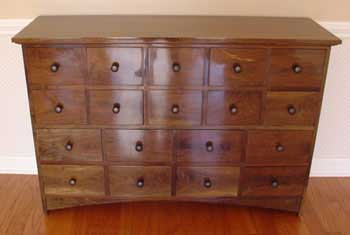Is Dehumidifier Kiln Wastewater Safe?
Don't assume that it's safe to dump kiln water to the environment. There could be some contamination. March 10, 2008
Question
I have built several small homemade kilns and was wondering if the water from the dehumidifiers was safe if the runoff made it to a pond 100 yards away?
Forum Responses
(Sawing and Drying Forum)
From contributor D:
Most likely. There are a few caveats, but for most species you are fine.
From Professor Gene Wengert, forum technical advisor:
A small amount of water should be safe, but it may not be legal to put industrial water into a pond. Your state people can tell you. The water may be acidic and will not contain dissolved oxygen. As contributor D says, there are a few species (such as eastern red cedar) that do have some chemical deposits of great concern.
From contributor T:
I do not know if the runoff from walnut would hurt any horses which may drink from the pond, but I believe they can have lethal allergic reactions to the sawdust, so I would check it out for sure.
Doc, could you elaborate on the ERC concerns? I cut the stuff everyday. I rarely dry it, but I did recently have a customer request that I dry 800BF for him. What should I watch out for?
From Professor Gene Wengert, forum technical advisor:
Some of the chemicals that cause the aroma of ERC will be dissolved in the water condensed in a DH unit.
From contributor D:
We recently had a very detailed analysis done of the water from incense cedar because we are doing a large project (four 85,000 BF kilns) in California. The test results covered 10-15 single space pages and the result was that the government people there found it was acceptable. I expected to see oil like we see from Western red, but there was none.
Eastern white cedar that is cut after the trees die can cause some real problems with fungus. These are trees killed by flooding from road work, etc. They sometimes get in the flow for shingle mills and cause problems. It is the same white fungus you see growing on dead trees.
Western red cedar usually has a small amount of oil that comes out and floats on the surface of the water. It is a great bug killer and if you drain to a pond or stream, can be a problem as it creates a visible oil slick. It is also pretty strong and acts like a paint remover, so if the coils are coated with the wrong stuff, you have a problem. It is easy to separate, so there is no need to have this problem. Those are all problems that can be dealt with, but you best deal with them as the wood is dried, not later as a cleanup.
Hardwoods and SPF are never a concern, but in this game, "never" is not a good word to use. We have thousands of kilns out over the last thirty years and have dealt with these issues many, many times, usually when some government regulator decides to be difficult or extra diligent, or some neighbors are trying to block a project.
From contributor S:
What about the DH water output from drying oak? I know that the tannic acid produced by drying oak is pretty hard on metal inside of a kiln, but am wondering about what comes out...
Another related question: are there any dangers to breathing the water vapor present in the atmosphere inside a DH kiln when checking a load of oak during the drying process?
From contributor D:
Tannic acid is not present in the drain water. There is some acetic acid (vinegar), and that is what is corrosive. But it is quickly neutralized when it flows on the ground, and usually within 2-3 feet of the drain, it is neutralized.
From Professor Gene Wengert, forum technical adivsor:
There is not tannic acid. It does not vaporize at the low temperatures. Acetic acid does, however. The only danger in a kiln is that there could be, in some cases, a lack of oxygen. I am not aware of any studies showing that breathing vapors in an oak kiln is considered dangerous.
